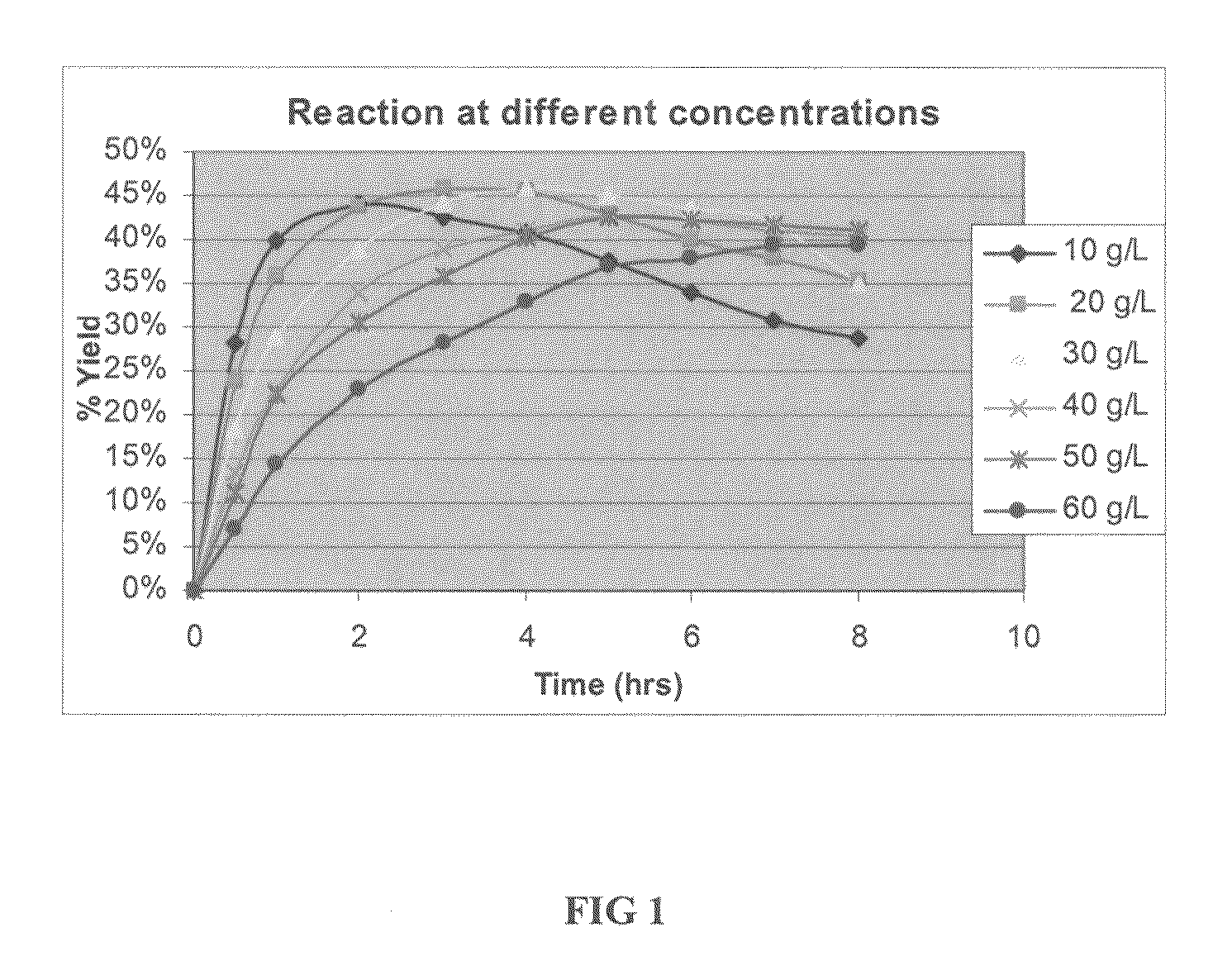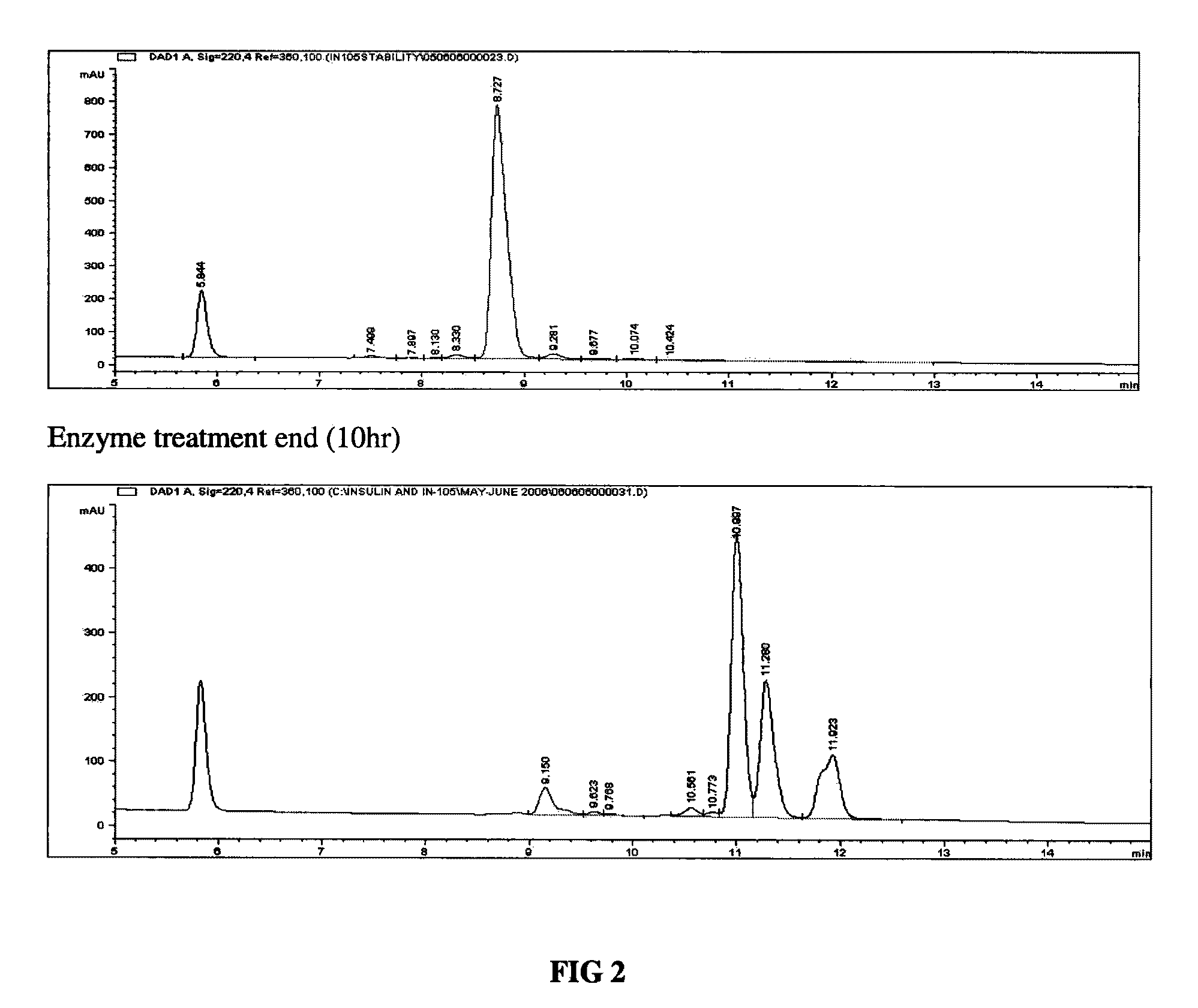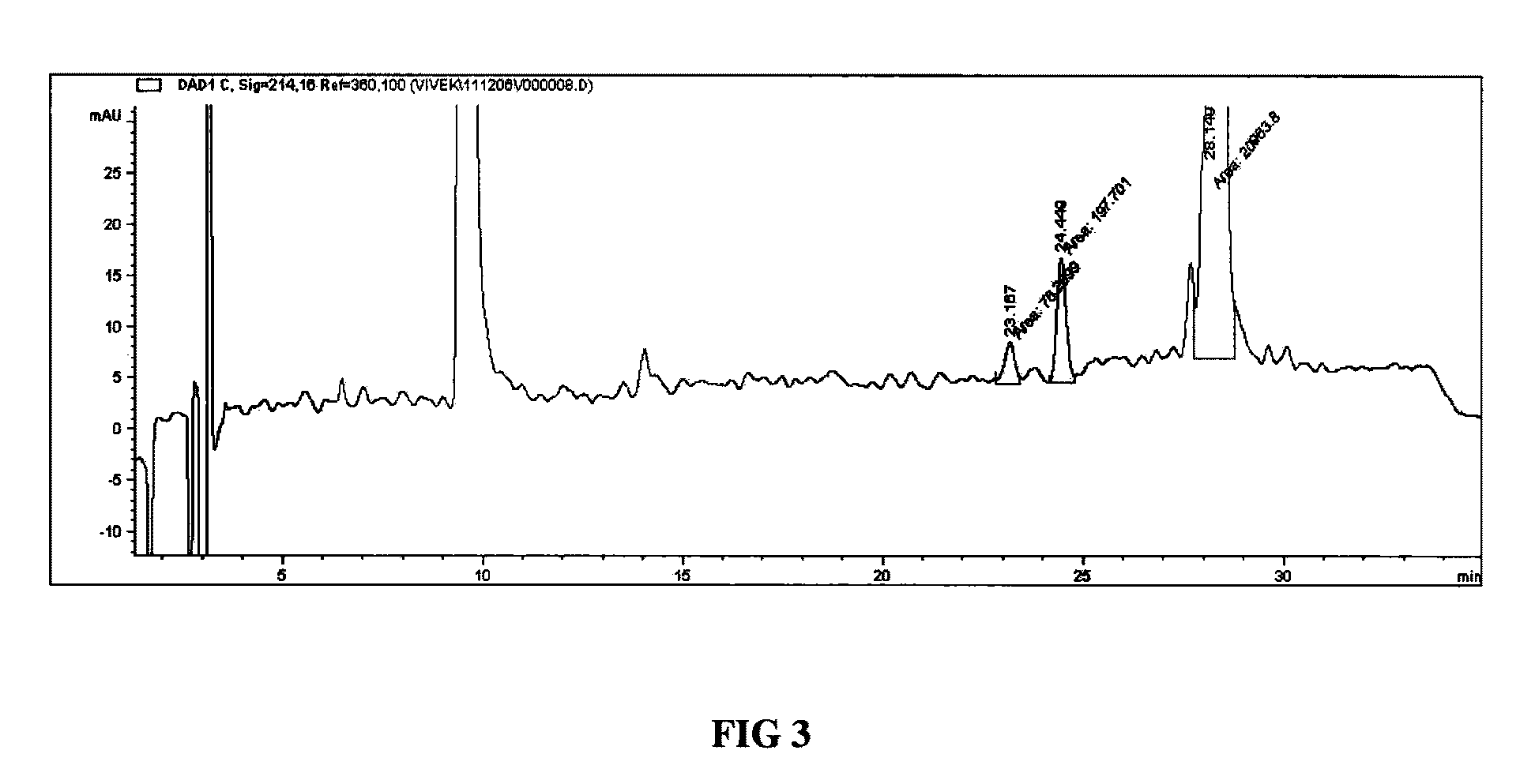Method of obtaining a purified, biologically active heterologous protein
a biologically active, heterologous protein technology, applied in the direction of peptides, hormone peptides, peptides/protein ingredients, etc., can solve the problems of difficult purification of final product impurities, difficult to achieve high yields, post-translational modification of resulting proteins, etc., and no global solution for every protein
- Summary
- Abstract
- Description
- Claims
- Application Information
AI Technical Summary
Benefits of technology
Problems solved by technology
Method used
Image
Examples
example 1
[0130]GIP-A represent the Glargine precursor of Formula X-[Glargine B chain (B1-B30)]-Y-[Glargine A chain (A1-A21)], where X is a leader peptide sequence, B chain is Glargine B chain sequence of B1-B30, Y is a linker peptide sequence between B chain and A chain, A chain is the A-chain of Glargine. The sequence may be devoid of leader or other leader peptide. The linker peptide Y can be anyone from the example RR, RRDADDR (SEQ ID 3). The GIP-A precursor may be produced by any suitable expression system such as Escherichia coli, Pichia pastoris, Saccharomyces cerevisiae, CHO cells etc.
[0131]The GIP-A precursor was cloned in frame with the Mat-alfa signal peptide in Pichia expression vector, pPIC9K. Pichia pastoris host strain GS115 was transformed with the recombinant plasmid to obtain clone expressing Glargine precursor. The secreted precursor was treated with trypsin to prepare Glargine and other product related impurities. Glargine was purified by using revere phase chromatography....
example 2
Construction of the Recombinant Vector Carrying the Insulin Glargine Precursor Gene
[0136]Insulin Glargine Precursor (GIP-A) was cloned in frame with the mat α-signal peptide in the Pichia pastoris expression vector, pPIC9K. The recombinant plasmid was used to transform Pichia pastoris host strain, GS115, and the secreted GIP-A was Insulin-Glargine Precursor which will be taken to downstream purification process to make the final product.
Transformation of a Pichia Host with the Recombinant Vectors Carrying the Insulin Glargine Precursor Gene:
[0137]pPIC9K / IGP-A clone harboring recombinant plasmid DNA was digested with Bgl II and used to transform electrocompetent cells of P. pastoris GS115 (his4) host. The invitrogen manual provides a detailed protocol of the transformation procedure.
Screening for Multi-Copy Integrants:
[0138]Approximately 2000 transformants were inoculated in YPD broth in 384 well micro titer plates along with appropriate controls. The plates were incubated at 30° C. ...
example 3
Fermentation Procedure
[0141]Recombinant Insulin-Glargine fermentation process has been optimized at laboratory scale. Presented below is a brief description of the process.
Seed Preparation
[0142]The seed medium contains following ingredients: Yeast nitrogen base, Ammonium sulfate, Glycerol, potassium dihydrogen phosphate and dipotassium hydrogen phosphate and D-Biotin.
[0143]A single vial from freezer was used to inoculate the seed flask. The vials were thawed to ambient temperature before inoculation under sterile conditions. The inoculum was dispensed in the Minimal Glycerol (MGY) medium in an aseptic manner.
[0144]The quantity to be added to each flask was ascertained, such that the initial OD600 in the pre-seed flask was between 0.1-0.2. The flasks were then incubated for 20-24 h on shaker at 30° C. at a speed of 230 RPM.
Fermenter Batching Conditions
[0145]Fermentation process has two phases, Growth phase (to build up biomass) followed by induction phase. Product was formed and secr...
PUM
| Property | Measurement | Unit |
|---|---|---|
| temperature | aaaaa | aaaaa |
| temperature | aaaaa | aaaaa |
| size | aaaaa | aaaaa |
Abstract
Description
Claims
Application Information
 Login to View More
Login to View More - R&D
- Intellectual Property
- Life Sciences
- Materials
- Tech Scout
- Unparalleled Data Quality
- Higher Quality Content
- 60% Fewer Hallucinations
Browse by: Latest US Patents, China's latest patents, Technical Efficacy Thesaurus, Application Domain, Technology Topic, Popular Technical Reports.
© 2025 PatSnap. All rights reserved.Legal|Privacy policy|Modern Slavery Act Transparency Statement|Sitemap|About US| Contact US: help@patsnap.com



